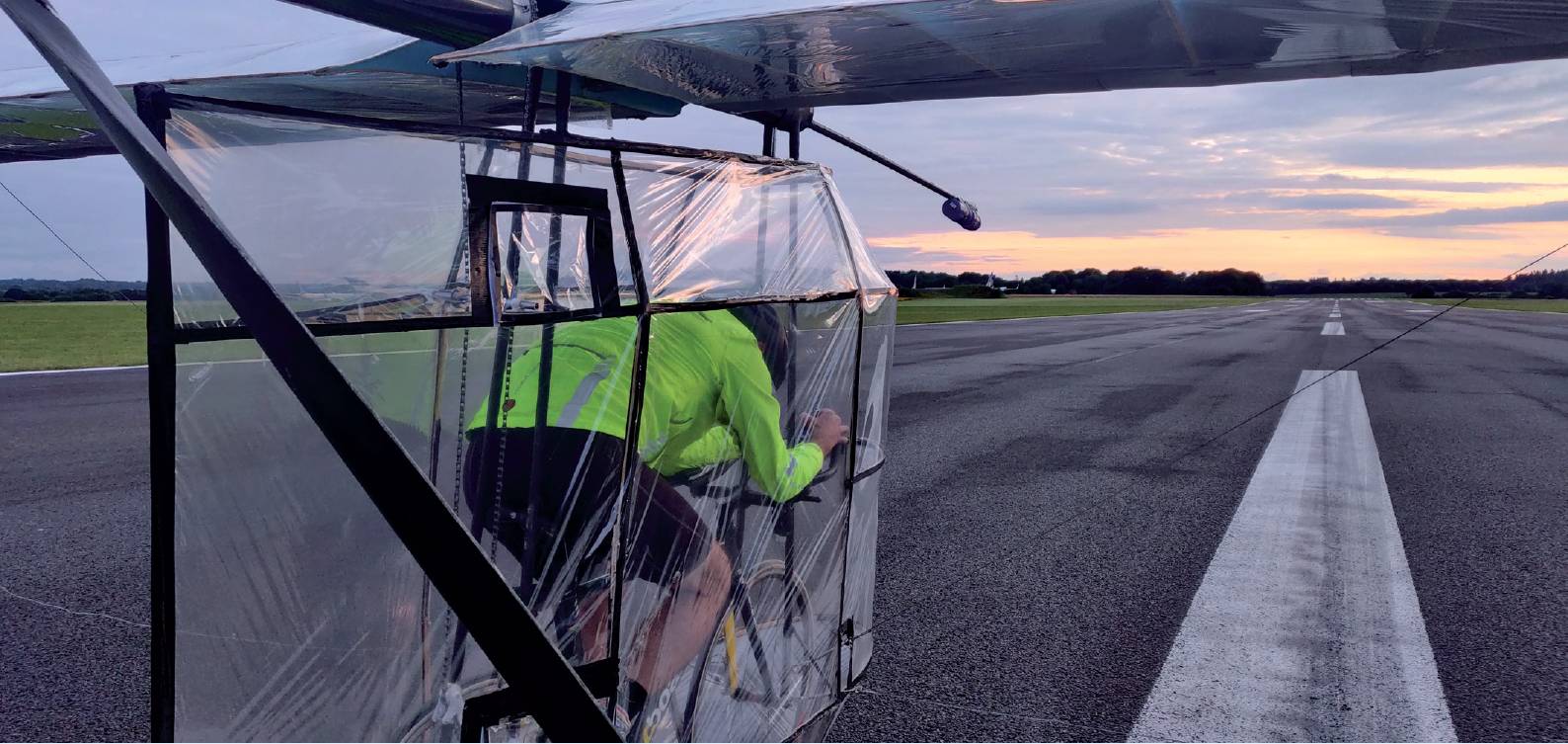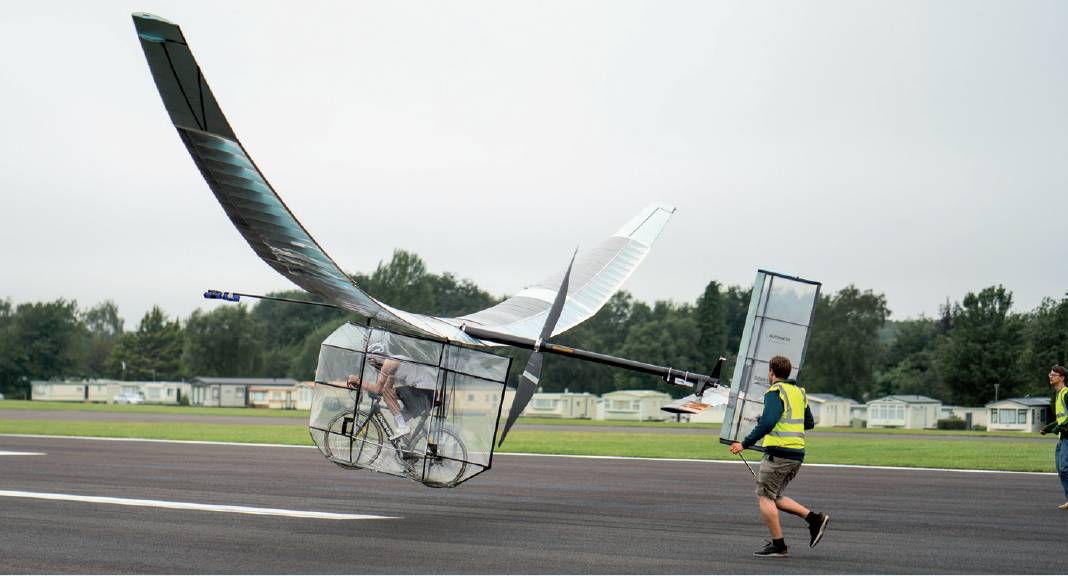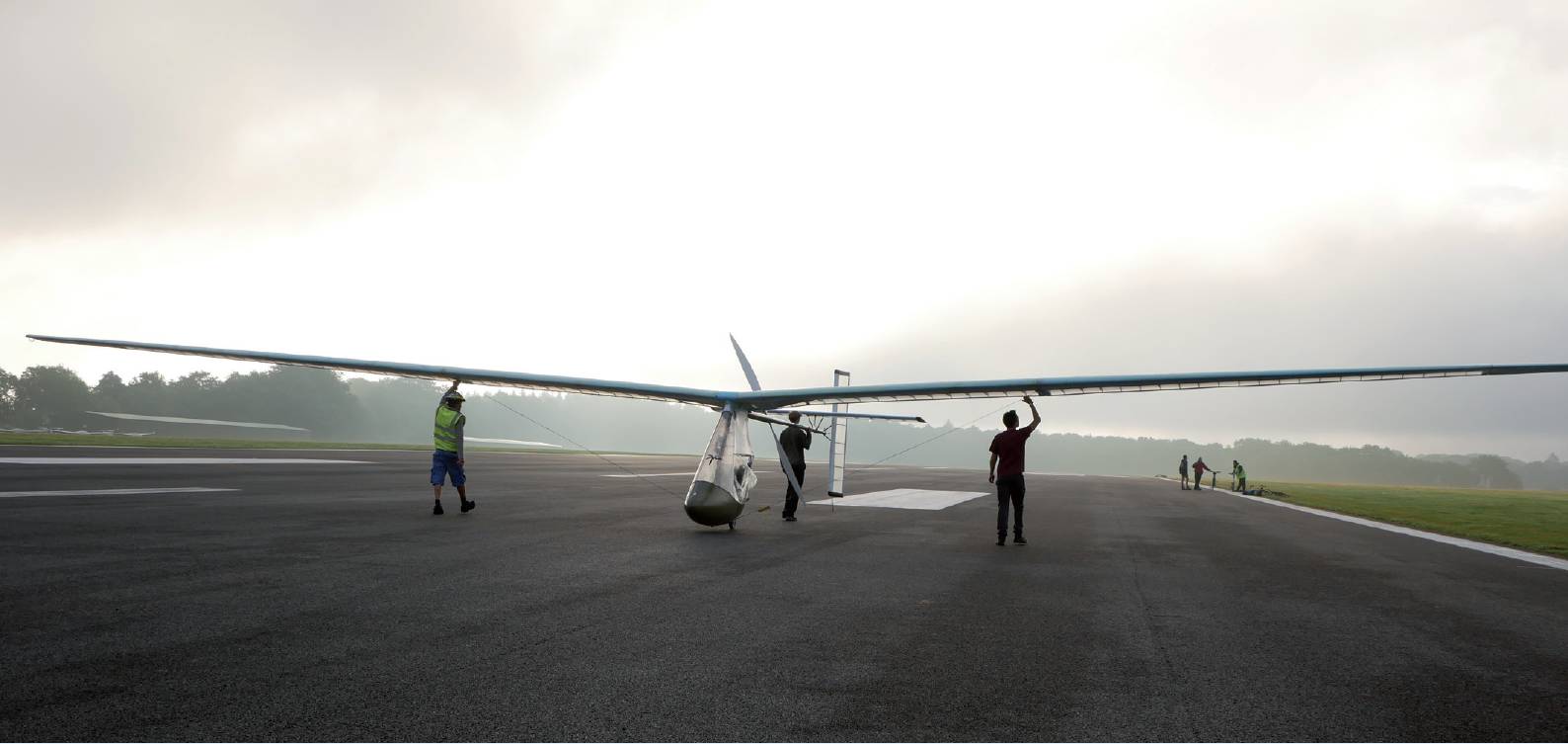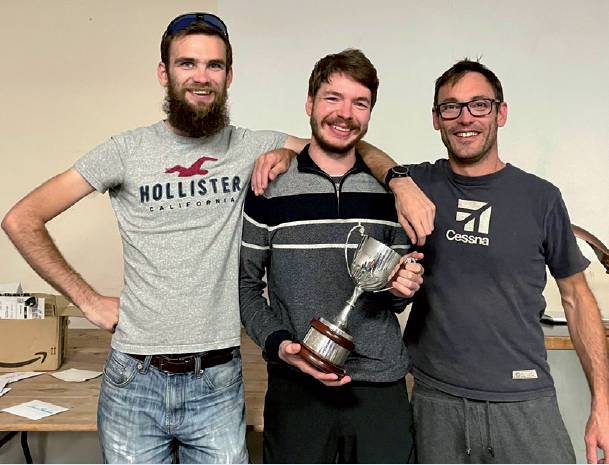Society News
Formula Flight takes off
The Royal Aeronautical Society’s Human Powered Flight Group has launched Formula Flight, a new competition for teams to build an aircraft. Aircraft that fly for more than five seconds will qualify for the prize. The competition is judged by flight duration and so the team with the longest flight each year will clinch the prize. There is of course a catch: the aircraft must be powered entirely by their pilot.
 Lazarus preparing for flight at the Icarus Cup on 30 July. BarneyHarce.
Lazarus preparing for flight at the Icarus Cup on 30 July. BarneyHarce.
Lighter than air doesn’t count, nor does using thermals to provide lift. This raises the difficulty significantly. Fewer people have flown human powered aircraft (HPAs) than have gone into space. The competition’s rules state that the aircraft have to be powered solely by the pilot and energy storage devices are not allowed unless only powering avionics. Competitors must also fly below 5m and wear a helmet to reduce risk.
Human powered flying is a sport that combines extreme athleticism with almost impossible engineering. The human body has an extremely bad power to weight ratio and maximum power can only be produced for a few seconds before the human gets tired. This leads to the aircraft needing to cruise and take off on what would normally be considered a chronically underpowered engine; they will often fly using only 300W. To counter this, human powered aircraft often have a high aspect ratio, low cruise speed and an extremely lightweight/delicate construction. They can only fly in incredibly low winds. It is one of the few sports that are almost impossible.
 Lazarus in flight. BarneyHarce.
Lazarus in flight. BarneyHarce.
Almost is the key word though; it may be hard but flight is still achievable. While it is more exclusive than going into space, you don’t need the backing of a government with a space programme and millions of pounds worth of funding. It is possible for an individual to design a HPA by themselves; the same could not be said of the space shuttle.
So, if they are so difficult then why would you ever build a human powered aircraft for Formula Flight? There are a few logical reasons to build an HPA: the construction techniques are similar to pseudo-satellites and so progress in HPAs helps pseudo-satellites. It is a great way to learn aerodynamics: competing for Formula Flight puts you on track for the much more lucrative Kremer prizes, the CO2 emissions from flying an HPA are negligible compared to conventional aircraft and building one will give you a brilliant understanding of aircraft design. That said, the most compelling reason isn’t fully logical, most HPA builders simply do it for the dream of flight unsupported by engines or external sources of power.
 Aerocycle is moved into postition. Becky Lane.
Aerocycle is moved into postition. Becky Lane.
Flying one brings together extreme physical effort and tricky piloting and is an achievement like no other. Veteran pilot John Boyce said: ‘The aircraft are things of great beauty, and if you can switch off from the frenetic activity which accompanies every launch, you find yourself marvelling at the graceful curve of the insect-like wings which take the pilot aloft.’
There is something very special about an aircraft powered solely by its pilot, something that has to be experienced to be believed. It is almost impossible that the vast majority of humanity will never experience it but just possible enough that you could.
 From left: Lewis David Rawlinson, runner-up in the Icarus Cup (in the Aerocycle aircraft); Kit Buchanan, who won the Icarus Cup also in Aerocycle; and Niall Paterson who flew the Southampton aircraft and achieved the qualifying time. Hania.
From left: Lewis David Rawlinson, runner-up in the Icarus Cup (in the Aerocycle aircraft); Kit Buchanan, who won the Icarus Cup also in Aerocycle; and Niall Paterson who flew the Southampton aircraft and achieved the qualifying time. Hania.